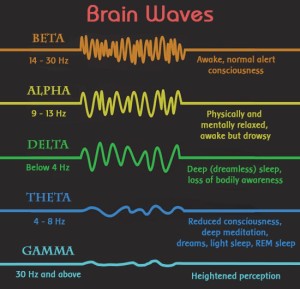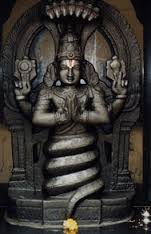Balance and Energy Flow through the Seven Sacred Directions
 The gyroscope offers a model to help get us started in our exploration of our embodied energy fields. We have a vertical axis, a radiant horizontal plane, and a center point where they meet. Feel this dynamic spiraling energy in your body so we can locate, inhabit and awaken the seven sacred directions of the cosmos. We will find a center and three pairs or polarities of energies that interact with each other to guide us home to the wholeness of the Sacred Universe, our true nature, or drashtuh svarupe.
The gyroscope offers a model to help get us started in our exploration of our embodied energy fields. We have a vertical axis, a radiant horizontal plane, and a center point where they meet. Feel this dynamic spiraling energy in your body so we can locate, inhabit and awaken the seven sacred directions of the cosmos. We will find a center and three pairs or polarities of energies that interact with each other to guide us home to the wholeness of the Sacred Universe, our true nature, or drashtuh svarupe.
In our bodies, our heart is the Center, the place of balance, of home. This is the first direction, the primary direction and organizing center, and is represented by the energies of expanding and condensing as shown in the Hoberman spheres. Energies fills the heart from the other six directions, and the heart radiates energy out to the world through the other directions. The other six directions all find expression of their qualities through the heart as variations of Love
balance, of home. This is the first direction, the primary direction and organizing center, and is represented by the energies of expanding and condensing as shown in the Hoberman spheres. Energies fills the heart from the other six directions, and the heart radiates energy out to the world through the other directions. The other six directions all find expression of their qualities through the heart as variations of Love
The vertical axis gives us the first of the three pairs of sacred directions and is our connection to the ‘unseen’ or hidden realms of existence, (unseen to our ordinary senses and modes of attention!)
The second direction is Down, through our root chakra, the muladhara, into Mother Earth, into the deep feminine, the dark underworld of the unconscious, of life at its primal level, unconditioned by social rules and repressions; into the shamanic world of fairies, elves, djinns and nymphs; of plant and animal guides and an ageless wisdom waiting to be rediscovered. We might call this the realm of the “Soul”. Patriarchal cultures are terrified of this realm and have demonized it for millennia. Still happening today, sad to day. If you believe yoga is about gaining controol of the body/mind, than your soul is needing serious nourishment! Fortunately there is a vast movement diving into ‘Soul”, ‘waking down’, rapidly making its way though many dimensions of modern culture into the world. To dive into the soul in a healthy way, we need the support of all seven directions.
The polar opposite direction, Up, connects us through our crown chakra to the heavenly realms of angels, Buddhas, and no longer embodied enlightened beings and teachers, to the intelligences of other stars and galaxies yet to be noticed on our planet. Traditional, ie patriarchal, forms of spirituality have place ascending, (getting to heaven, kaivalya) as primary or only way of spiritual growth. We are now moving toward an integral approach to spiritual practice that honors, and requires, all directions.
The horizontal plane has the final four directions, two more pairs, also known as the cardinal directions of North, South, East and West. These represent the ‘seen world’, (as opposed the the unseen of the vertical axis) taken in by our five senses. These directions can be seen as references for pairs of skills and talents, life situations and challenges available for us to be cultivated and healed during our time here on the planet. This is a cross cultural model with different attributes and imagery associated with each of the four. They may represent: the four seasons of summer, fall winter and spring; the four cardinal moments of the day: sunrise, noon, sunset and midnight; the four basic elements of earth, water, fire and air. Native Americans use the four directions of the ‘Medicine Wheel’ as map for the sacred journey of life. For our purposes here we will draw upon observations from Bill Plotkin’s Wild Mind” mentioned in a previous blog, as well as a more traditional yoga perspective and poses, as we embody these possibilities.
East: Sunrise, the front of the body, purva, as in purvottanasana, beginnings and rebirth, springtime. From “Wild Mind” we find the combination of innocence and wisdom leading to simplicity and joyousness, curiosity and a sense of adventure in life. When East is lacking or repressed, we can get dark and heavy, weighted down by West’s connection to death and dying and the challenges of ‘soul’ work.
West: Sunset, autumn, the back of the body, paschimottanasana, endings, letting go, completions, introspection. ‘Wild Mind’: A connection to death and transformation, the underworld, the ‘soul’, to romance that is utterly and darkly mysterious, to our muse that flows from our deep imagination. When West is repressed or lacking, we can become very superficial or trivial as East’s lightness loses the grounding provided by West. This is common in spiritual communities with a charismatic leader with a dark shadow. If we are looking for the ‘light’ but refuse also to see and acknowledge the dark shadowy side that we all, including spiritual teachers, have, we repress our own unconscious pain and confusion. We pretend to be ‘light’ because we believe that is what spirituality is supposed to be about, but our souls suffer deeply when ignored.
North: Midnight, winter, the elders, keepers of the ancient wisdom, the left side of the body. “Wild Mind”: the nurturing adult, the healer, leader; the source of compassion and connection, of belonging. When North is repressed or ignored, we can become selfish and hedonistic as ‘wild youth’ of South loses its way in the world without the guidance of the adults and elders. Modern culture lives with North repressed as most of the ‘leaders’ in politics and business these are terminal self centered adolescents.
South: Noon, summer, the right side of the body, youth. “Wild Mind”: wild and indigenous, totally home as an embodied being, erotic, instinctually alive and connected to all of the natural world, flowering, traveling, celebrating aliveness. When South is neglected or repressed, we can become overly serious and frozen in our beliefs and attitudes as the adult side loses its wild and youthful balance. The future becomes terrifying and we long for the ‘good old days’ when things were ‘done the right way’.
Start with any centering pose, sitting or standing. From your heart, open root and crown chakras to open center channel, balance front body with back body, right side with left. Feel centered and alive. Rest in the stillness at the root of the heart. In all poses keep returning here again and again.
Balancing North and South, aka Right and Left.  Many standing poses are designed to balance right and left. By doing each side with awareness of center channel and front/back balance, the imbalances can be seen explored, and balanced, as best possible. Go beyond the structure and feel Right/South and Left/North qualities awakening and growing. Find poses where you can stay long enough to take all this in. In all poses, balance right and left. (Notice that hatha yoga is a very ‘South nurturing’ practice.)
Many standing poses are designed to balance right and left. By doing each side with awareness of center channel and front/back balance, the imbalances can be seen explored, and balanced, as best possible. Go beyond the structure and feel Right/South and Left/North qualities awakening and growing. Find poses where you can stay long enough to take all this in. In all poses, balance right and left. (Notice that hatha yoga is a very ‘South nurturing’ practice.)
 Balancing East and West, aka Front and Back. Forward bending and back bending poses are obvious. Go beyond the structure to add the qualities of East and West in your explorations. Mild back bends like salabhasana or sphynx and simple standing forward bends are great ways to play with layers beyond the physical. Keep your back muscles relaxed to feel the West/mystery behind you. It is a scary place so we all tend to hold on, unconsciously. Of course, in all poses, balance front and back.
Balancing East and West, aka Front and Back. Forward bending and back bending poses are obvious. Go beyond the structure to add the qualities of East and West in your explorations. Mild back bends like salabhasana or sphynx and simple standing forward bends are great ways to play with layers beyond the physical. Keep your back muscles relaxed to feel the West/mystery behind you. It is a scary place so we all tend to hold on, unconsciously. Of course, in all poses, balance front and back.
Balancing Heaven and Earth, head and tail.  Inversions, supported when necessary offer an obvious way to balance above and below. But any and all poses allow the sense of up and down, into the earth and up the the sky, weight and lightness.
Inversions, supported when necessary offer an obvious way to balance above and below. But any and all poses allow the sense of up and down, into the earth and up the the sky, weight and lightness.
Integration: The Spiral: Feel how twisting poses allow you to play with all directions simultaneously. Be the gyroscope, and feel how you can spiral up, down or both. How you can turn right, left or both, in any twist. Spin out to the horizon line and back into to your center. Expand your horizons beyond the body, and what you think are your limitations. These poses are really fun.
Returning to the Source:  Savasana: Back into the center, into the stillness, into the mystery.
Savasana: Back into the center, into the stillness, into the mystery.
Moving Out into the World
When ready, bring all of your qualities, all seven directions, your Whole Self, into the world and live the good life in all of its delightful and challenging aspects.









